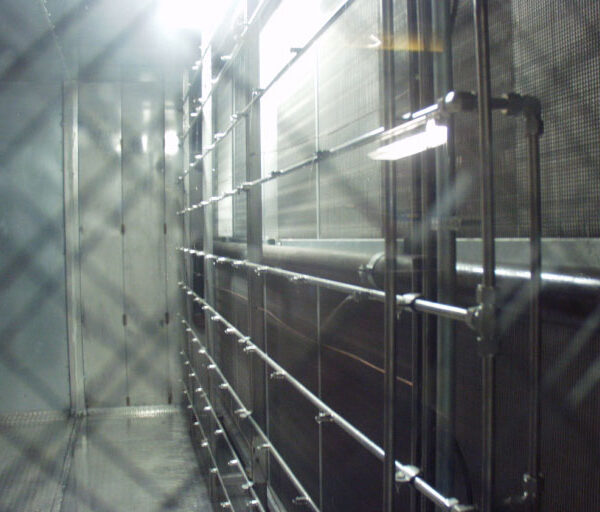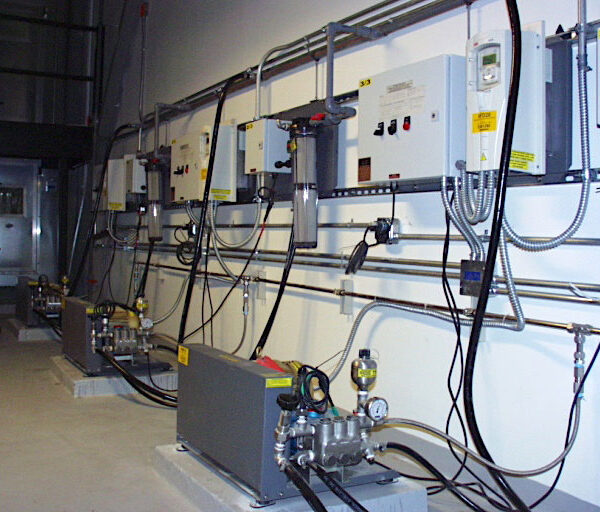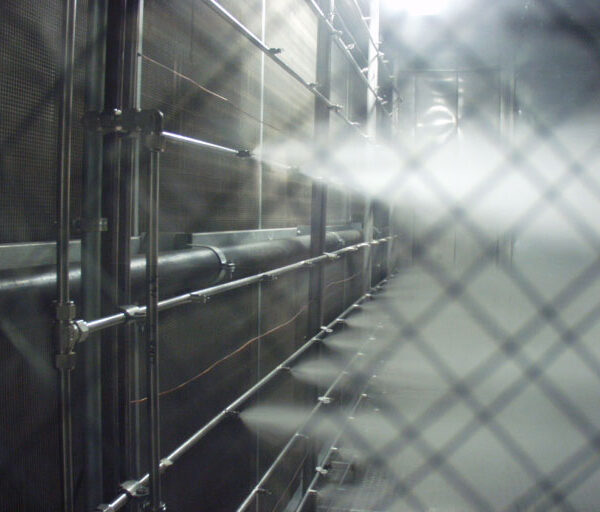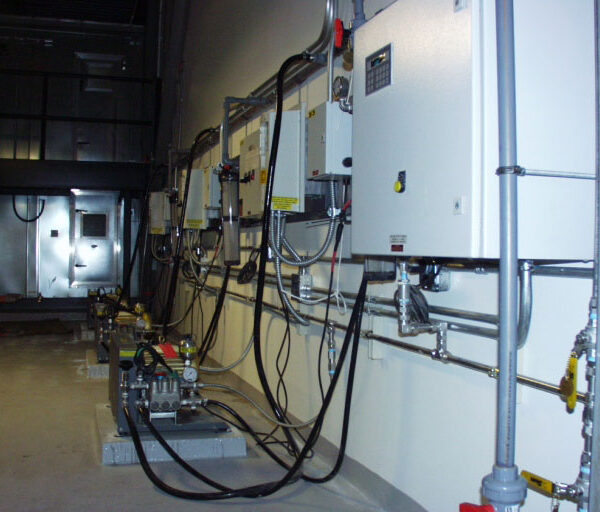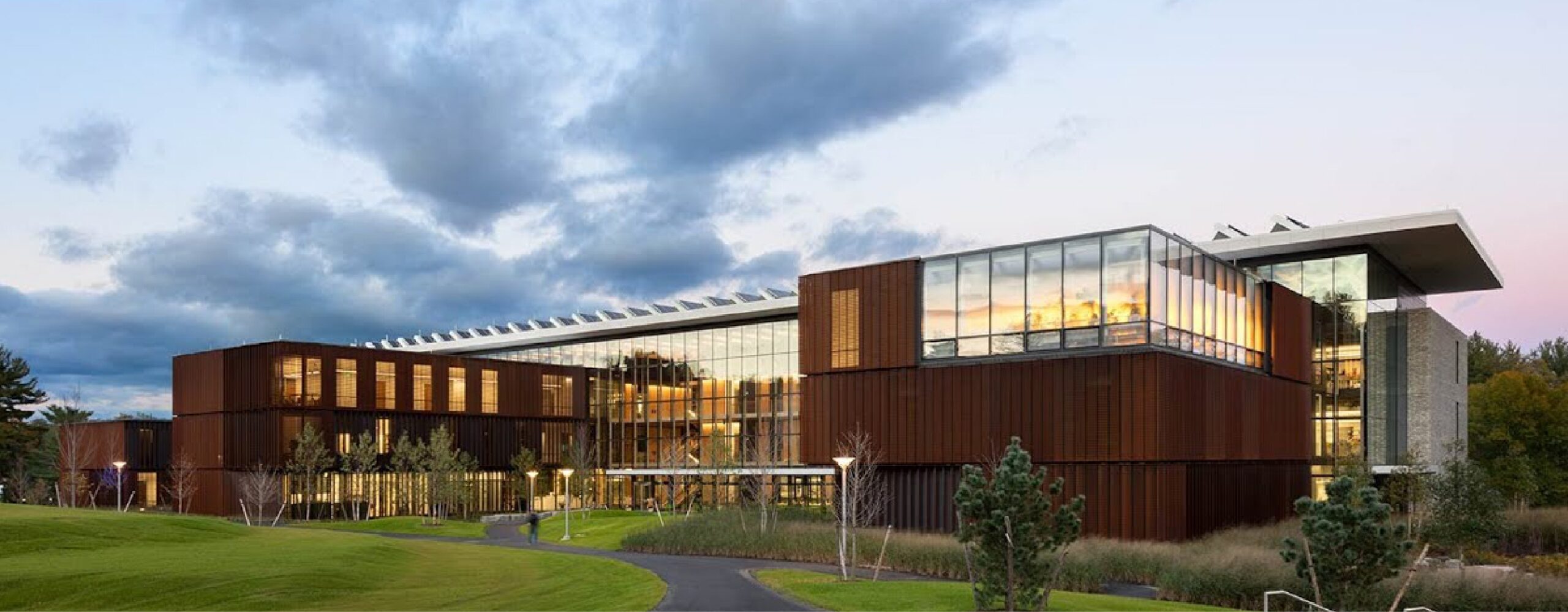Iowa State University Builds the First Gold LEED Certified Chemistry Laboratory
Universities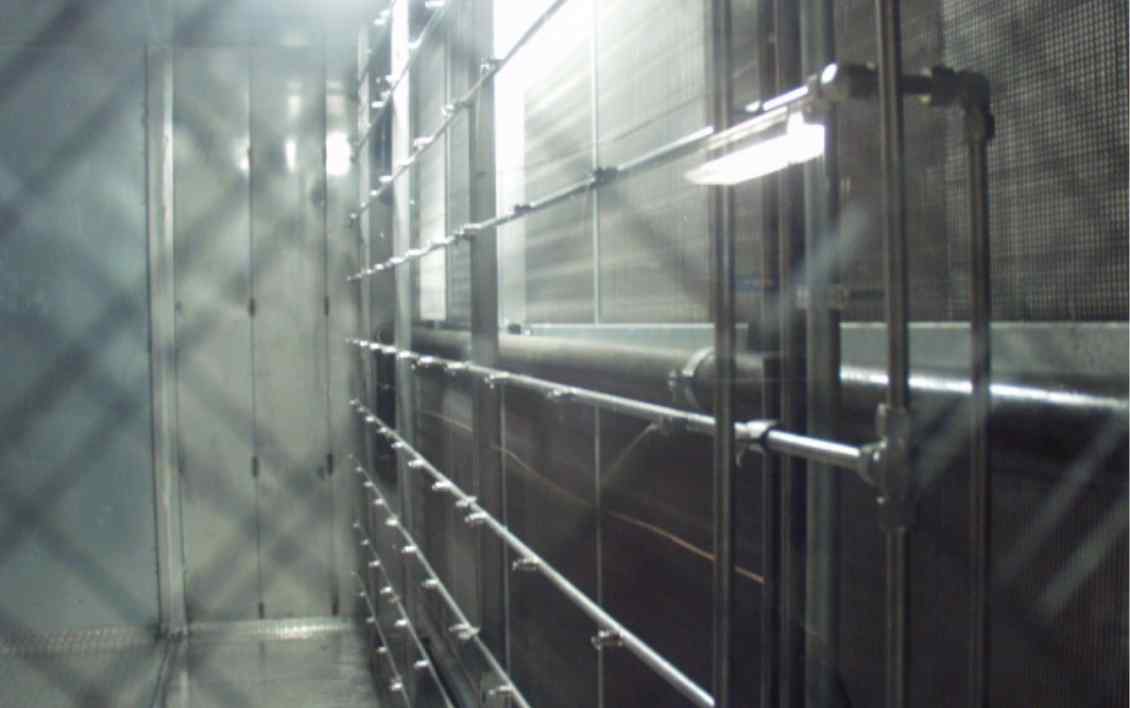
In 2011, ISU’s Hach Hall became the first chemistry building in the country to achieve LEED Gold certification from the Green Building Council. Chemistry laboratory AHUs have high humidity loads, and because of the need to continually exhaust any fumes, they operate at 100% outside air driving up energy costs. The MeeFog’s fog humidification system provides cost-effective and efficient humidification to the laboratory, and a backup pump ensures 100% availability of the system.
Most building air handling systems recycle the majority of the air and only bring in a small percentage of outside air, lowering the costs of building humidification, heating, and cooling. Chemistry laboratories are a different matter. Because of the need to continually exhaust any fumes, they operate at 100% outside air, driving up energy costs.
Iowa State University (ISU) recently demonstrated that even a chemistry laboratory can achieve high levels of efficiency. In 2011, ISU’s new Hach Hall became the first chemistry building in the country to achieve LEED (Leadership in Energy and Environmental Design) Gold certification from the Green Building Council, something which Mark Stephenson, ISU’s construction manager for facilities planning and management says “is hard to do on a chemistry building or a laboratory.”
Designing for Maximum Efficiency:
ISU’s Department of Chemistry serves more than 4000 students each semester and its analytical chemistry graduate program is ranked in the top 20 in the nation. Since the department was outgrowing its existing facility, Gilman Hall, the university decided to build a second chemistry facility, Hach Hall. Completed in time for the 2010 Fall Semester, the 136,000 sq. ft. building has three floors above ground holding labs, offices and classrooms, one underground for vibration and light sensitive research laboratories, and a penthouse for the air handling and other equipment.
ISU took a wide ranging approach to maximizing energy efficiency. It uses natural lighting in all offices, collects rainwater to flush the toilets and analyzed all the building envelope details to provide an airtight seal.
“The building is well insulated and extremely tight,” he says. “There was very little air infiltration, which is a credit to the people who provided the building envelope.”
To minimize heating and cooling costs, the building’s space plan placed the lobby, the offices and the conference rooms on the west side of the building where they could be served by one air handling system designed primarily for human comfort. The laboratories are served by another four AHUs which provide air to the rooms as well as exhausting the air through more than 260 fume hoods over the work tables.
“The air system is primarily for ventilation, not heating or cooling,” says Matt Jesson, Project Manager for Waldinger Corp, which installed the Air Handling Units (AHUs). “If they were only dealing with the thermal load, there would be much less air going through there, but because of the exhaust they have to use 100% outside air.”
Challenge:
Chemistry laboratories are high energy affairs, with a lot of power needed to run equipment and keep the air comfortable and free of chemical fumes. When Iowa State University built its new chemistry building it wanted one that would not only meet its research and educational needs, but also set a new standard for energy efficiency.
Solution:
ISU used MeeFog humidification systems to maintain indoor air quality in the winter, cutting energy costs and helping the laboratory become the first ever to receive LEED Gold certification.
Cutting Energy Use in Half:
A single custom Phoenix Manufacturing Inc. (PMI) air handler heats and cools the offices and conference rooms on the building’s west side which require a lower percentage of outside air to maintain indoor air quality. The rest of the building, which contains the laboratories, is divided into four quadrants, each with its own 60,000 CFM PMI air handler. The four laboratory AHUs are equipped with plate heat exchangers to recover heat from the laboratory air before it is exhausted from the building.
Henneman Engineering, which designed the air handling system, estimated that by using highly efficient heat exchangers, zone presence sensors and variable air volume systems on the fume hoods, the air handling system would use about half the energy of a base code compliant laboratory building. But, because the laboratories use 100% outside air, greatly increasing the amount of moisture needed, an efficient solution was also needed for humidification.
“In the winter in Iowa, when bringing in the cold air and heating it up, you end up with very dry air,” says Jesson. “The humidity in the building would be 5% without the humidification.”
To achieve a design relative humidity of 30%, the humidification systems needs to operate about 3500 hours per year. The amount of moisture required varies with the outside temperature. When it is below zero, 4600 to 4800 pounds of water per hour are required, but at 45 degrees the need drops to 740 pounds per hour. Using a gas boiler to provide the steam would cost about $137,000 annually. Using a Mee high pressure fogging system would drop the costs to $107,000 per year, a $30,000 savings, even taking into account the additional heating needed to offset the cooling effect of the fog.
“The user required a certain percentage of relative humidity and our research indicated fogging was the most effective way,” says Stephenson. “It is also less troublesome in terms of maintenance.”
Waldinger Corp. installed a single Mee Industries fog humidification system, controlled by the campus’s Johnson Controls Metasys building automation system, to service all five air handlers. The Meefog system uses two 5 hp CAT Pumps, each producing 7 gpm @1000 psi, with an additional pump on standby in case one of the two primary units goes down or is being serviced. Within each of the AHUs is an array of nine ½” stainless steel pipes with a total of 94 fogging nozzles. When there is a need for humidity in one of the quadrants, the appropriate number of solenoid valves open up, sending the water to the number of nozzles required.
Construction on Hach Hall was completed in 2010 and the building was dedicated in October. Stephenson says that he has been in the laboratories with the ventilation hoods running and is satisfied with the way the air handling system works.
“It’s actually quite comfortable,” says Stephenson. “It works well.”
Project Conditions:
Location: Ames, Iowa USA
Make-up Air Units: 4 x 60,000 CFM
Design target: 70° F 30% RH
Mee’s scope of work: Supply of fog pump skid, staging valves, nozzle manifolds, and mist eliminators. Supervision of installation and startup.
Fog System Design:
Humidification capacity: 4,800 #/hr
Total horse power: 2 x 5 HP
Max. water flow: 14 gpm
Humidification stages: 15
Installation Gallery
“The user required a certain percentage of relative humidity and our research indicated fogging was the most effective way. It is also less troublesome in terms of maintenance. It’s actually quite comfortable, It works well.”
Mark Stephenson, ISU’s construction manager for facilities planning and management
Learn more about previous successful Meefog Fog Humidification Systems installations:

